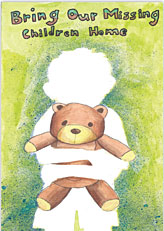OJJDP Reflects on Legacy of Former Attorney General Janet Reno
 Former Attorney General Janet Reno. Photo source: Santa Clara Law Digital Commons
Former Attorney General Janet Reno. Photo source: Santa Clara Law Digital CommonsJanet Reno, the 78th Attorney General of the United States, passed away on November 7, 2016. Ms. Reno was the longest serving attorney general in the 20th century, and the first woman to ever serve in that capacity. OJJDP will remember Ms. Reno best for her decades-long advocacy on behalf of our nation’s children. Throughout her career, Ms. Reno adhered to the principle that providing safe, stable, and nurturing environments, combined with community-based early intervention strategies, are key to ensuring that children grow up to lead productive and successful lives and avoid contact with the juvenile justice system.
“Janet Reno’s leadership laid the groundwork for many of OJJDP’s efforts to prevent and address the trauma caused to children by early exposure to violence, crime, and abuse,” said Administrator Listenbee. “Her tireless defense of children is an important part of her legacy, and her dedication continues to inspire us at OJJDP today.”
White House Event Addresses Breaking Barriers for Girls
On November 14–15, 2016, the White House Council on Women and Girls and The National Crittenton Foundation hosted “Young Women Leading the Way: Strategies and Solutions To Breaking Barriers for Girls and by Girls.” The event was attended by federal officials, including representatives from OJJDP; advocates; scholars; representatives from community-based organizations; and young women who are activists and changemakers within their own communities. Following a screening of the documentary “Resilience: The Biology of Stress and the Science of Hope,” Catherine Pierce, Senior Advisor to the OJJDP Administrator, moderated a panel discussion on “Youth, Trauma, and Resilience.” During the panel, Assistant Attorney General for the Office of Justice Programs Karol V. Mason referenced OJJDP-funded efforts, such as the National Survey on Children’s Exposure to Violence and the Changing Minds public awareness campaign and noted that, “the courts, prosecutors, systems, and schools are understanding the connection of children’s exposure to violence and other outcomes with children.” Administrator Listenbee expressed the hope that raising awareness about the pervasiveness and impact of children’s exposure to violence will enhance treatment services “so girls can get the right care in their own locations without ever coming into the juvenile justice system.”
To learn more about how OJJDP is addressing the unique needs of at-risk and system-involved girls, visit the OJJDP website.
OJJDP Leaders Discuss Needs of System-Involved Chicana/Latina Girls at Conference
“Because girls are a much smaller population in juvenile justice system than boys, they’re often overlooked, so there is a lack of awareness of these girls’ experiences,” said OJJDP Senior Policy Advisor Georgina Mendoza McDowell at the first-ever conference on Chicana/Latina Girls in the Juvenile Justice System.
The conference—held on November 2, 2016, in Salinas, CA—was sponsored by OJJDP’s National Girls Initiative, the National Compadres Network, and the NoVo Foundation. Approximately 100 experts, advocates, researchers, and Latina girls and young women attended the conference. The conference was organized to identify the needs of at-risk and system-involved Chicana/Latina girls and to increase interest in gender-responsive, culturally based, and trauma-informed juvenile justice system reforms.
Ms. McDowell conceded that it is “very difficult to find data and information uniquely on Latina girls” and announced the release of the OJJDP bulletin, Delinquency Cases Involving Hispanic Youth, 2013. According to Catherine Pierce, Senior Advisor to the OJJDP Administrator, nearly 30 percent of young people arrested are girls and young women, many of whom have witnessed or experienced violence. And, although they pose little threat to public safety, they continue to be arrested and detained for nonviolent acts, including status offenses.
More information on OJJDP’s work with at-risk girls is available online in the Reducing Reliance on Confinement and Improving Community-Based Responses for Girls At Risk of Entering the Juvenile Justice System solicitation and the Office’s policy guidance on Girls and the Juvenile Justice System.
OJJDP Administrator Pens Article on Law Enforcement’s Role in Changing Minds About Children’s Exposure to Violence
 In an article published in the December 2016 issue of Police Chief magazine, Administrator Listenbee explores the critical role law enforcement can play in elevating our nation’s response to children’s exposure to violence. Such exposure is significantly correlated with a range of adverse outcomes later in life, including involvement in the justice system.
In an article published in the December 2016 issue of Police Chief magazine, Administrator Listenbee explores the critical role law enforcement can play in elevating our nation’s response to children’s exposure to violence. Such exposure is significantly correlated with a range of adverse outcomes later in life, including involvement in the justice system.
“For most young people, their initial contact with the justice system is through an interaction with a law enforcement officer,” Administrator Listenbee writes. “That officer may be among those supportive and caring adults who can help guide a youth toward healing and away from further involvement with the justice system, while law enforcement officers who interact regularly with young people may recognize signs of trauma and take the first steps to guide them to available services and programs.”
Administrator Listenbee also provides an overview of Changing Minds, the Justice Department’s recently launched national campaign to raise awareness about the prevalence and impact of children’s exposure to violence and the trauma that may result. Changing Minds has developed a website, ChangingMindsNOW.org, and a toolkit with video, digital, and print content to educate teachers, coaches, health professionals, guidance counselors, law enforcement officers, and other adults who work with children about children’s exposure to violence and how to mitigate the effects of trauma through caring and supportive gestures.
OJJDP Participates in a Series of State Advisory Group Meetings
Administrator Listenbee offered remarks at State Advisory Group meetings in Hawai’i and Utah on December 15, 2016, in Georgia on December 12, in New York on December 6, and in Iowa on December 1. Among a range of topics, Administrator Listenbee highlighted the successes of OJJDP’s Smart on Juvenile Justice Initiative, which is currently supporting reforms in Georgia, Hawai’i, Kentucky, Kansas, South Dakota, and West Virginia. Mr. Listenbee reported that juvenile commitments have dropped by 33 percent in Georgia and 45 percent in Kentucky since July 2015. In addition, admissions to the Hawai’i Youth Correctional Facility have decreased from a high of 193 in fiscal year 2008 to 47 in fiscal year 2015; South Dakota closed the STAR Academy, a state-run residential facility in April 2016, and expanded statewide evidence-based interventions; and, as of July 2016, West Virginia expanded its community-based alternatives with the evaluation of 12 existing youth reporting centers and the opening of three additional centers.
Mr Listenbee also spoke about OJJDP’s proposed Formula Grants regulations and the recently launch Changing Minds public awareness campaign—a national education campaign to raise awareness about the urgency and prevalence of childhood trauma and exposure to violence, and to motivate adults who regularly interact with children and youth to take action and help.
Mr. Listenbee also spoke to State Advisory Groups in Richmond, VA, on November 30; Harrisburg, PA, on November 17; and Orlando, FL, on October 31. OJJDP’s participation in SAG meetings is part of a larger effort to provide more responsive support to states in their efforts to reform youth justice systems across the country.
Administrator Listenbee Highlights Juvenile Justice Reform at Conference
On November 9, 2016, Administrator Listenbee discussed new developments in OJJDP’s juvenile justice system reform efforts at the 12th Annual Strengthening Youth and Families Conference in Arlington, TX. Among other achievements, Listenbee highlighted the Smart on Juvenile Justice Initiative’s fiscal year 2016 Age of Criminal Responsibility Training and Technical Assistance program, which will fund training and technical assistance to states that have an age of criminal responsibility below 18 years old. “We hope to analyze states’ capacities to raise the upper limit of juvenile justice jurisdiction to 18 years old,” Listenbee said. “Doing so will not only improve life outcomes, but also reduce recidivism for youth, in accordance with evidence-based practices.”
 2016 winning poster by Michael Wu from Walnut Elementary School in Walnut, CA.
2016 winning poster by Michael Wu from Walnut Elementary School in Walnut, CA.OJJDP Announces 2017 National Missing Children’s Day Poster Contest
OJJDP invites fifth graders nationwide to participate in the 2017 National Missing Children's Day poster contest. Submissions are due by March 16, 2017. The annual contest creates an opportunity for schools, law enforcement, and child advocates to discuss the issue of missing and/or exploited children with youth, parents, and guardians and to promote child safety.
OJJDP will invite the national winner and his or her parents or guardians and teacher to Washington, DC, to participate in the National Missing Children's Day commemoration in May 2017. The ceremony honors the heroic and exemplary efforts of agencies, organizations, and individuals to protect children. National Missing Children’s Day has been commemorated in the United States since 1984, when it was first proclaimed by President Ronald Reagan.
OJJDP Releases Fall 2016 Issue of Journal of Juvenile Justice
OJJDP has released the fall 2016 issue of the online Journal of Juvenile Justice. This issue features articles on the variables that are associated with contact with the juvenile justice system and recidivism for youth; reasons for the 20-percent-turnover rate among correctional officers in juvenile facilities; and research into trauma and adversity found among justice-involved youth. Topics also include an examination of research and testing of disproportionate minority contact prevention, decisionmaking, and treatment services; a comparison of masculine beliefs held by incarcerated sex abusers and youth incarcerated for other offenses; and a comparison of the mental and behavioral health profiles of male and female youth placed in intensive, home-based treatment.
Department of Justice Launches Violence Reduction Clearinghouse Toolkit

The Justice Department’s Violence Reduction Network (VRN) has introduced an online Violence Reduction Clearinghouse toolkit that allows users to build and download a custom toolkit of evidence-based strategies, best practices, training, technical assistance, publications, and more to help reduce violence. Users can browse by topic area, such as justice-involved youth, which includes OJJDP-sponsored or -produced resources. Topics also include human trafficking, gang violence, community policing, domestic violence, and social media.
Established in 2014 and administered by the Office of Justice Programs’ Bureau of Justice Assistance, VRN enhances and improves the capacity of local jurisdictions to address violent crime and increase public safety. For more information on the VRN clearinghouse toolkit, visit the VRN website.
